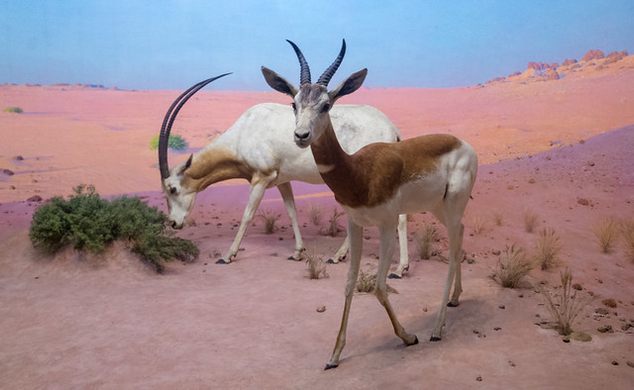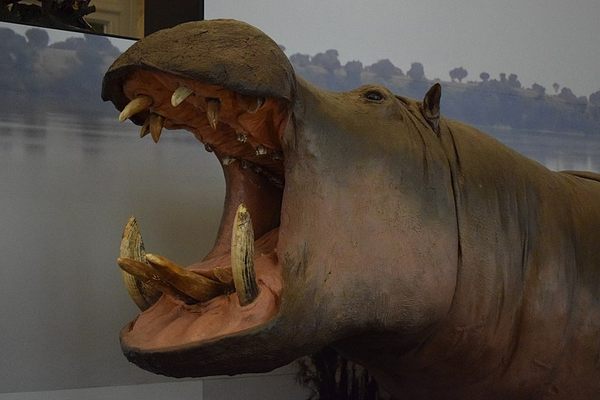Libyan Desert Diorama
This poignant display is now a memorial to these regionally extinct species.
It’s easy to be pulled in different directions while exploring the Akeley Hall of African Mammals at the American Museum of Natural History. However, there is one diorama that, although neither dramatic nor a crowd favorite, deserves particular attention.
On the left side of the Libyan Desert Diorama, you’ll see a group of three addaxes, or spiral-horned antelope. To the right of the addax trio is a cream-colored antelope moving toward a clump of vegetation. Its horns highlight the reason for its name, the scimitar-horned oryx, as they resemble the curved swords used by the Arabic tribes and kingdoms of the region. Also on the far right of the diorama is a darker colored animal called the dama or mhorr gazelle.
The poignancy of this diorama lies in the sad fact that it is a snapshot of a scene that is now impossible to witness in Libya, or indeed anywhere in the vast windswept and sunbaked sands of the northeastern Sahara Desert. Both the scimitar-horned oryx and the dama gazelle were extirpated decades ago due to a deadly combination of overhunting, competition, habitat loss, and diseases from domestic cattle.
The Saharan addax was soon to follow on the path to extinction in Libya. When the country’s dictator, Muamar Gaddafi, was overthrown during the 2011 Libyan Civil War, it brought about unforeseen consequences for the wildlife. Heavily armed militias controlled the country, and access to firearms became widely available. This, combined with the absence of any centralized authority to enforce anti-poaching laws, led to an explosion of illegal hunting in rural areas.
The time of day depicted in this diorama is intended to be dawn, the reddish sand cast in a pastel pinkish-purple color. The horizon has a blueish-gray hue, showing condensation from the accumulated dew rising from the dunes into a hazy morning sky. The background of the diorama was painted by the museum’s artist, James Perry Wilson, who developed a sophisticated method for painting skies and landscapes.
Know Before You Go
The diorama is within the American Museum of Natural History, which is open from 10 a.m. to 5:45 p.m. every day. Entrance is free, but it is strongly recommended you contribute a small donation. You can find the Libyan Desert Diorama in the Akeley Hall of African Mammals.
















Follow us on Twitter to get the latest on the world's hidden wonders.
Like us on Facebook to get the latest on the world's hidden wonders.
Follow us on Twitter Like us on Facebook